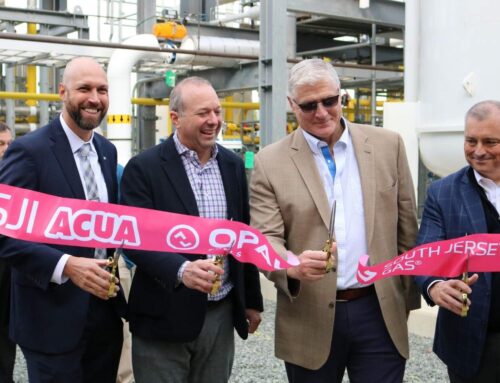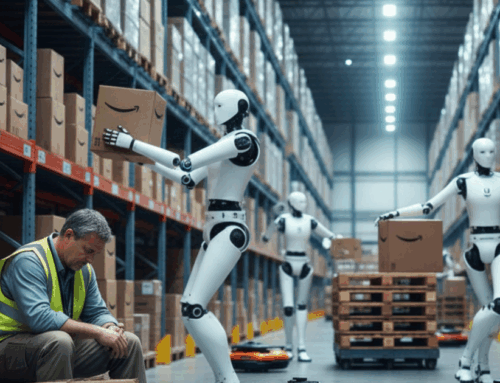Bitcoin Mining Stocks Hit New Highs on AI Pivot with CleanSpark Leading the Pack
October 24, 2025
Bitcoin mining stocks jumped sharply this week after several big companies said they will expand into artificial intelligence (AI). Many miners now plan to use their computers and power systems for AI data centers, not just for Bitcoin.
CleanSpark led the rally after announcing its move into AI. The shift shows how fast the mining industry is changing as companies look for new ways to earn money.
CleanSpark Ignites the Rally
Las Vegas–based CleanSpark saw its shares rise as much as 13% on October 21, 2025. The company said it will build and run data centers made for AI computing, in addition to mining Bitcoin.
CleanSpark also hired Jeffrey Thomas, a veteran with more than 40 years of experience, as Senior Vice President of AI Data Centers. Thomas once led Saudi Arabia’s multi-billion-dollar AI data center program. He has helped create about $12 billion in shareholder value across 19 companies.
Thomas remarked:
“CleanSpark is at a pivotal moment in its journey. Together, we have a tremendous opportunity to deliver exceptional solutions for our customers while creating long-term value for shareholders and positioning CleanSpark at the center of the AI and intelligent computing revolution.”
The company already secured land and extra power in College Park, Georgia, near Atlanta, to build its first AI sites. It is also studying more possible locations in other U.S. states.
The news came as Bitcoin prices climbed back above $110,000, recovering from earlier drops when the price fell from highs above $126,000 in early October.
More Miners Follow the Same Path
CleanSpark is not alone. Many mining companies are now trying to grow beyond Bitcoin. The reason is clear: mining rewards have fallen, and energy costs are rising.
After Bitcoin’s 2024 halving, rewards for miners dropped from 6.25 BTC to 3.125 BTC. This made mining less profitable, pushing companies to look for other income sources.
Companies like Marathon Digital Holdings, Riot Platforms, Canaan, Core Scientific, Bitdeer Technologies, Hut 8, Cipher Mining, and TeraWulf have all announced similar plans. Their stocks also rose:
- Marathon Digital gained 7.97% to $21.13.
- Riot Platforms jumped 11.21% to $22.28.
- Canaan, a hardware maker in China, surged about 28%.
Publicly traded Bitcoin miners raised more than $4.6 billion through loans and convertible notes in late 2024 and early 2025 to fund their AI projects.
The CoinShares Bitcoin Mining ETF, which tracks the sector, has soared 160% this year. Investors are clearly excited about the shift toward AI.
Why Miners Are Betting on AI
The move to AI computing makes sense for miners. They already own powerful hardware, data centers, and energy contracts. These can easily be used for AI instead of crypto.
AI systems need large amounts of electricity and fast processors to train and run models. Bitcoin miners already have this setup. By shifting to AI workloads, they can earn money even when Bitcoin prices are low.
According to the International Energy Agency (IEA), global demand for AI data centers could reach over 1,000 terawatt-hours per year by 2030 — about the same as all of Japan’s electricity use today.


The global AI infrastructure market could be worth $1.3 trillion by 2032, growing around 25% each year. That makes it one of the fastest-growing industries in the world.
For miners, the message is simple: if Bitcoin mining is less profitable, AI computing can fill the gap and create steady revenue.
From Mining Rigs to AI Powerhouses
AI computing and Bitcoin mining use similar technology. Both rely on high-performance processors to handle huge amounts of data.
Miners already operate powerful chips, cooling systems, and strong electricity connections. They can reuse all these to run AI and high-performance computing (HPC) jobs.
CleanSpark plans to build hybrid data centers — some for Bitcoin, others for AI workloads. Likewise, Core Scientific said it will set aside part of its 1.3-gigawatt capacity for AI clients. Other companies are exploring similar plans.
This model could change the industry. Instead of just mining coins, these firms could become “compute providers” — selling power and computing to AI companies, research labs, and cloud platforms.
Investors See Opportunity Beyond Bitcoin
Investors like this new direction. It means miners no longer depend only on Bitcoin’s price swings. They can earn a steady income from long-term contracts with AI firms.
The IEA says global electricity use from data centers could double by 2030, largely because of AI. The U.S. has about 40% of the world’s data center capacity, but new projects face delays due to power and permitting issues.
Bitcoin miners already have access to large power sources. This gives them an edge when building new AI sites. They can repurpose their existing energy deals for AI computing, cutting startup time and costs.
Still, experts warn that running AI data centers is not easy. It needs new software, specialized equipment, and skilled workers. It also takes longer to make a profit compared to Bitcoin mining, which can adjust quickly to market prices.
Energy Use and the ESG Equation
Energy use remains a key concern for both AI and Bitcoin mining. The Cambridge Centre for Alternative Finance estimates Bitcoin mining uses about 120 terawatt-hours of electricity each year, roughly equal to Argentina’s total use.


Mining companies are trying to improve their environmental impact. CleanSpark says it sources most of its electricity from renewable or low-carbon energy. It plans to apply the same approach to its AI expansion.
Switching to AI could also make mining more efficient. Many AI centers use advanced cooling systems and can run on renewable energy more easily than older mining farms.
This could help miners meet environmental, social, and governance (ESG) goals while supporting the growth of clean digital infrastructure.
A New Era of Digital Infrastructure
The rise of AI has opened a new chapter for Bitcoin miners. What began as a niche focused on crypto now looks more like a digital infrastructure industry that powers AI, data analytics, and renewable energy systems.
If the transition succeeds, mining companies could become important players in the global computing market. They would supply power and servers for everything from AI model training to smart grid management.
For investors, this change offers both opportunity and risk. It provides exposure to two fast-growing industries — crypto and AI — but also depends on how well miners adapt.
Analysts say the key will be execution. Building AI centers takes time and money, and not all miners will succeed. But those who manage the shift well could become leaders in clean, high-tech energy and computing. They will shape the next phase of digital infrastructure — one that connects blockchain, AI, and sustainable power.
Search
RECENT PRESS RELEASES
Related Post







